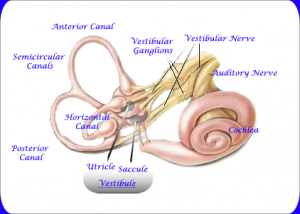Vertigo is different than just feeling dizzy from time to time.
It is an episode that can come on quickly, resolve just as quickly or last for hours and even days.
Vertigo can be caused by no apparent reason, antibiotics, jumping, sneezing, allergies, sleeping, falling to name a few. It can have serious effects on your safety while walking and driving.
Nick Rinard Physical Therapy has had many patients call his/her MD only to be told vertigo will go away on its own or scheduled an appointment to receive a generic hand out-that is not patient individualized. We have found this one size approach does not fit all. These self-help hand-out are most beneficial with the guidance of a physical therapist.
Please do not spend days or even weeks trying to heal yourself or wait for your symptoms to go away.
In as few as 2 visits our tailored approach can get you back on solid ground. Safely walking and driving around without fear of falls or a sudden onset of dizziness while driving.
More
By Megan Plante, DPT
21 Mar, 2014
Clinical Case of the Week
BPPV, easily treated, improvement, MDT, Mechanical Diagnosis and Therapies, Mechanical disorder, Nick Rinard physical therapy, Physical Therapy, Portland Oregon, Positive response, vertigo
The most common cause of vertigo (dizziness) is benign paroxysmal positional vertigo (BPPV) and it is a mechanical disorder. A trained clinician can evaluate and treat this condition based off of the patient’s symptoms. The evaluation consists of moving the head into specific positions. Symptoms of BPPV include vertigo with change in head position, nausea with or without vomiting and disequilibrium (poor balance).
Curable

Vestibular System
BPPV is a curable condition affecting the vestibular system (inner ear). Your inner ear is comprised of 3 semicircular canals (SCC) and 2 otolith organs. These structures detect head movements (acceleration). Crystals called otoconia are embedded in the otolith organs. Sometimes, the crystals can become dislodged and misplace into the semicircular canals. The misplaced crystals result in increased sensitivity to head movements.
Hopes for a Positive Response
I was treating a patient for low back pain when she mentioned that she was experiencing severe episodes of dizziness. I informed her about BPPV and mentioned that the treatment was very simple and effective. She agreed to have an evaluation in hopes for a positive response.
My patient tested positive for BPPV utilizing the Hallpike-Dix test for the left semicircular canals. I also performed a few other tests and exercises to rule out other potential causes for symptoms. Once we had our diagnosis of BPPV, the treatment was very simple.
Improvement in just one week
I took my patient through a series of head movements that reposition the crystals back into the otolith organs (the saccule and ultricule). After performing the repositioning maneuver, baseline symptoms were decreased and she returned the next week without having any severe episodes of vertigo.
BPPV – A Common Vertigo that is Easily Treated
BPPV is the most common cause for vertigo. Luckily, it is very easy to diagnose and treat with a trained therapist. If you or someone you know has vertigo as a result from head movements, have a physical therapist evaluation so that you may start feeling better today!
More

